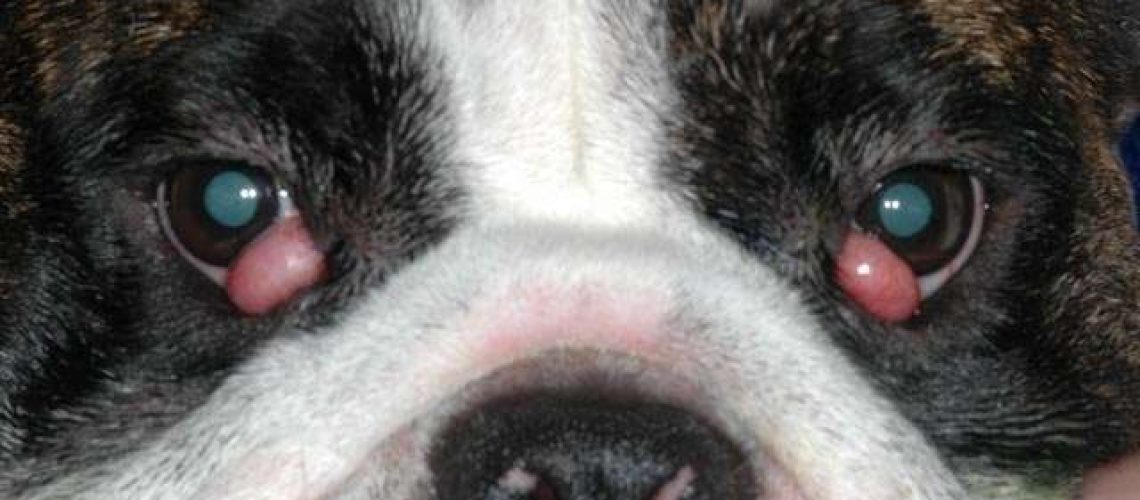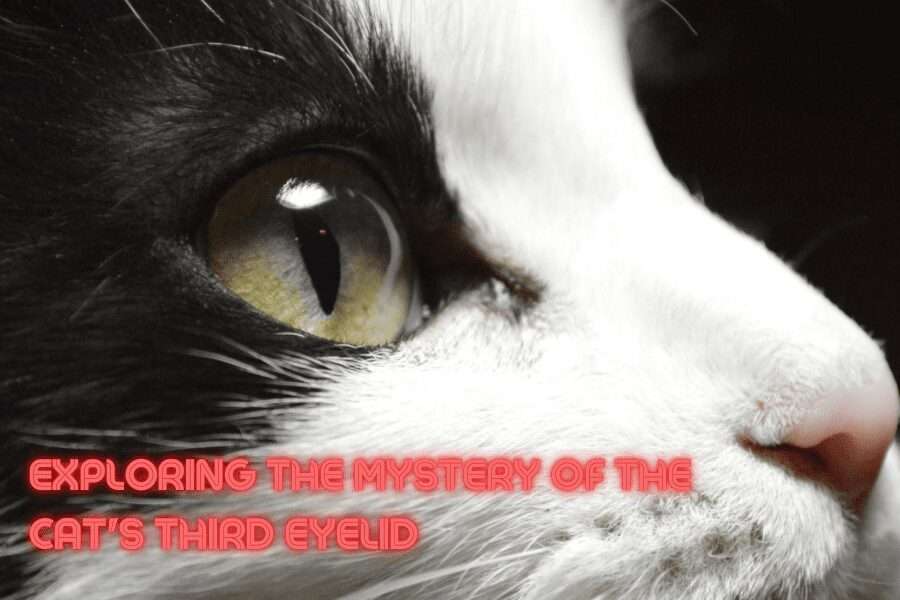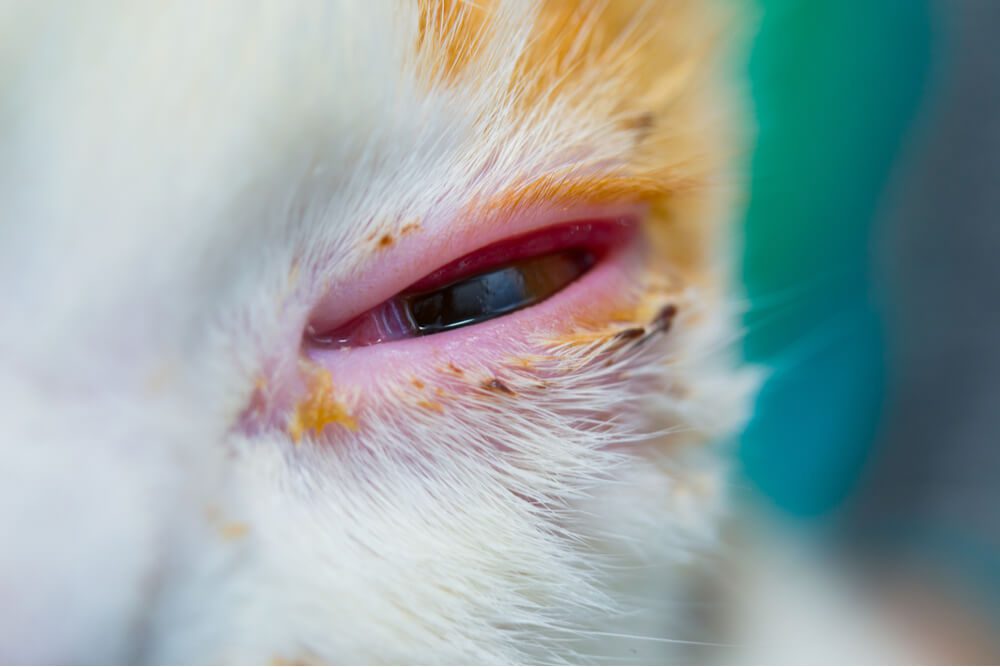Key Takeaways:
- Cherry eye is a common condition in dogs where the gland in the third eyelid prolapses and becomes visible.
- It can occur in any dog breed, but certain breeds such as Bulldogs, Cocker Spaniels, and Beagles are more prone to developing cherry eye.
- Symptoms of cherry eye include a red or swollen mass in the corner of the dog's eye, excessive tearing, and discomfort.
- Treatment for cherry eye typically involves surgical correction to reposition the prolapsed gland back into its normal position.
- If left untreated, cherry eye can lead to complications like dry eyes, corneal ulcers, and conjunctivitis.
Are you a dog lover? If so, then understanding the topic of Cherry Eye in dogs is essential for you. This captivating subject will not only provide you with valuable knowledge but also help you become a responsible and caring pet owner. Imagine being able to spot the signs of this common condition early on and take immediate action to prevent any discomfort for your furry friend. In fact, did you know that up to 3% of all dogs can develop Cherry Eye at some point in their lives? By delving into this topic, you'll gain insights into the causes, symptoms, and treatment options available. So let's embark on this informative journey together and ensure the well-being of our beloved canine companions!
What is Cherry Eye in dogs and why does it happen?
Cherry Eye is a condition that can affect dogs, particularly certain breeds. It occurs when the gland in the dog's eye, called the third eyelid gland, becomes swollen and protrudes from its normal position. This swollen gland looks like a small red or pink cherry, which is how the condition got its name.
The exact cause of Cherry Eye is not fully understood, but it is believed to be related to a weakness in the connective tissue that holds the gland in place. This weakness allows the gland to slip out of position and become visible. While Cherry Eye can occur at any age, it is most commonly seen in young dogs under the age of two.
How does Cherry Eye happen?
Cherry Eye happens when there is a problem with one of the glands in your dog's eye. These glands produce tears to keep your dog's eyes moist and healthy. Sometimes, these glands can become swollen or irritated, causing them to stick out from under your dog's eyelid. When this happens, it can look like your dog has a small red or pink lump on their eye.
Why do some dogs get Cherry Eye?
Some dogs are more prone to getting Cherry Eye than others. Certain breeds, such as Bulldogs, Beagles, Cocker Spaniels, and Shih Tzus, have a higher risk of developing this condition due to their genetics. Additionally, factors such as allergies or infections can also contribute to the development of Cherry Eye.
How to tell if your dog has Cherry Eye?
If you suspect that your dog may have Cherry Eye, there are some signs you can look out for. One common symptom is a small red or pink swelling on one or both of your dog's eyes. This swelling may appear suddenly and can be quite noticeable. Your dog may also show signs of discomfort or irritation, such as excessive blinking or rubbing their eyes.
If you notice any of these symptoms, it is important to take your dog to the veterinarian for a proper diagnosis. The vet will be able to determine if it is indeed Cherry Eye and recommend the appropriate treatment.
How can I tell if my dog has Cherry Eye?
To tell if your dog has Cherry Eye, you can gently lift up their eyelid and look for any red or pink swelling on the inner corner of their eye. If you see a small lump protruding from under the eyelid, it is likely that your dog has Cherry Eye.
What are some other signs of Cherry Eye in dogs?
In addition to the visible swelling, there are other signs that your dog may have Cherry Eye. These can include:
1. Excessive tearing or discharge from the affected eye.
2. Redness or inflammation around the eye.
3. Squinting or keeping the eye partially closed.
4. Irritation or rubbing of the eye.
5. Changes in your dog's behavior, such as increased sensitivity to light or reluctance to open their eyes fully.
If you notice any of these symptoms, it is best to consult with a veterinarian for a proper diagnosis and treatment plan.
Treating Cherry Eye: What are the options?
When it comes to treating Cherry Eye in dogs, there are several options available depending on the severity of the condition. In some cases, mild cases may resolve on their own without intervention. However, most cases require veterinary treatment to prevent complications and relieve discomfort.
One common treatment option is surgical correction. This involves repositioning the gland back into its normal position and securing it in place using sutures or other techniques. Surgery is usually performed under general anesthesia by a skilled veterinarian.
Another treatment option is the use of medications or eye drops to reduce inflammation and promote healing. These medications can help alleviate symptoms and prevent further complications, but they may not completely resolve the Cherry Eye.
What are the treatment options for Cherry Eye?
The treatment options for Cherry Eye include:
1. Surgical correction: This involves surgically repositioning the gland back into its normal position and securing it in place.
2. Medications or eye drops: These can help reduce inflammation and promote healing, but may not fully resolve the condition.
3. Combination approach: In some cases, a combination of surgery and medication may be recommended for optimal results.
It is important to consult with a veterinarian to determine the best course of treatment for your dog's specific case.
What happens if Cherry Eye is left untreated?
If left untreated, Cherry Eye can lead to several complications. The exposed gland is at risk of becoming dry, irritated, or infected, which can cause discomfort and potentially affect your dog's vision. Additionally, the longer Cherry Eye remains untreated, the more difficult it becomes to correct surgically.
Therefore, it is crucial to seek veterinary care if you suspect your dog has Cherry Eye to prevent these potential complications.
Are some dog breeds more likely to get Cherry Eye?
Yes, certain dog breeds are more prone to developing Cherry Eye due to their genetics. Some of these breeds include Bulldogs, Beagles, Cocker Spaniels, Shih Tzus, and Lhasa Apsos.
These breeds often have a predisposition for weakened connective tissue around the third eyelid gland, making them more susceptible to Cherry Eye. However, it is important to note that any breed or mixed breed dog can potentially develop this condition.
Which dog breeds are more likely to get Cherry Eye?
Some dog breeds that are more likely to get Cherry Eye include:
1. Bulldogs
2. Beagles
3. Cocker Spaniels
4. Shih Tzus
5. Lhasa Apsos
If you own one of these breeds, it is important to be aware of the signs and symptoms of Cherry Eye and take proactive measures to prevent or treat the condition.
Why are certain dog breeds more prone to Cherry Eye?
Certain dog breeds have a higher risk of developing Cherry Eye due to their genetics. These breeds often have weaker connective tissue around the third eyelid gland, making it easier for the gland to slip out of position.
Additionally, some breeds may have shallower eye sockets or larger eyes, which can also contribute to an increased risk of Cherry Eye.
Preventing and reducing the risk of Cherry Eye in dogs
While it may not be possible to completely prevent Cherry Eye in dogs, there are some steps you can take to reduce the risk or minimize the severity of the condition.
One important preventive measure is regular eye care and hygiene. Keeping your dog's eyes clean and free from debris can help prevent irritation and potential complications. Additionally, avoiding excessive rubbing or scratching of the eyes can also reduce the risk of Cherry Eye.
Another preventive measure is selective breeding practices. If you are considering getting a dog breed that is prone to Cherry Eye, it is advisable to choose a reputable breeder who prioritizes breeding for healthy eyes and has taken steps to minimize the occurrence of this condition in their breeding lines.
How can I reduce the risk of my dog getting Cherry Eye?
To reduce the risk of your dog developing Cherry Eye, you can:
1. Keep their eyes clean by gently wiping them with a damp cloth.
2. Avoid excessive rubbing or scratching of their eyes.
3. Choose a reputable breeder who prioritizes breeding for healthy eyes.
4. Regularly visit the veterinarian for routine eye examinations.
Taking these steps can help minimize the risk of Cherry Eye and promote overall eye health in your dog.
Can Cherry Eye be prevented?
While it may not be possible to completely prevent Cherry Eye, following preventive measures such as good eye hygiene and selective breeding practices can help reduce the risk or minimize the severity of the condition. Regular veterinary check-ups and prompt treatment of any eye-related issues can also contribute to preventing complications associated with Cherry Eye.
Preventing and reducing the risk of Cherry Eye in dogs
Understanding Cherry Eye
Cherry Eye is a common condition that affects dogs, particularly certain breeds like Bulldogs and Cocker Spaniels. It occurs when the gland in the dog's third eyelid becomes inflamed and protrudes, resembling a cherry. This can be uncomfortable for your furry friend and may even lead to more serious eye problems if left untreated. As a responsible pet owner, it's important to take preventive measures to reduce the risk of Cherry Eye.
Taking Care of Your Dog's Eyes
To prevent Cherry Eye, it is crucial to maintain good eye hygiene for your dog. Regularly clean your dog's eyes with a damp cloth or special eye wipes made for pets. This helps remove any dirt or debris that could potentially irritate their eyes and lead to inflammation. Additionally, avoid exposing your dog's eyes to harsh chemicals or irritants such as smoke or strong perfumes.
Proper Nutrition for Healthy Eyes
A well-balanced diet plays a significant role in maintaining your dog's overall health, including their eye health. Ensure that your furry companion receives proper nutrition by feeding them high-quality dog food recommended by veterinarians. Look for brands that contain essential nutrients like vitamin A, which is vital for healthy eyesight. If you have any concerns about your dog's diet, consult with a veterinarian who can provide personalized dietary recommendations.
Avoiding Excessive Strain on the Eyes
Certain activities can put strain on your dog's eyes and increase the risk of developing Cherry Eye. Avoid excessive pulling on leashes during walks or playing rough games that involve tugging on toys. These actions can cause unnecessary pressure on the delicate structures around the eyes. Instead, opt for gentle exercises and activities that promote bonding without putting strain on your dog's eyes.
Regular Veterinary Check-ups
Regular visits to the veterinarian are essential for maintaining your dog's overall health and detecting any potential eye problems early on. During these check-ups, your vet can examine your dog's eyes thoroughly and identify any signs of inflammation or abnormalities. Early detection is key in preventing Cherry Eye from progressing into a more severe condition.
Remember, by taking preventive measures and providing proper care for your furry friend, you can significantly reduce the risk of Cherry Eye. Stay vigilant and attentive to your dog's eye health, ensuring they live a happy and comfortable life free from eye-related issues.
In conclusion, cherry eye is a condition that can affect dogs where their third eyelid pops out. It can cause discomfort and may require surgery to fix. It's important for dog owners to be aware of this condition and seek veterinary help if their pet shows any signs of cherry eye.
How do you treat cherry eye in a dog?
Cherry eye can typically be treated through surgical procedures that involve replacing the gland located behind the third eyelid. Your veterinarian will discuss the specific treatment plan with you during your visit, and in certain situations, you may be referred to a specialist in veterinary ophthalmology.
Can cherry eye in dogs heal itself?
What is the treatment for cherry eye? Some suggest that massaging the affected eye can help reposition the protruding gland, and in some cases, the gland may correct itself or with the use of medication and steroids. However, surgery is typically necessary.
What triggers cherry eye in dogs?
The exact cause of a cherry eye in dogs is not fully understood, but it is believed to be related to weak fibers. The gland is normally held in position by connective tissue, but if these fibers are weak, the gland can easily become displaced and protrude.
How long can dogs live with cherry eye?
Cherry eye in dogs is not a condition that poses a threat to their life, nor is it a medical emergency. However, it is important to take your pet to the veterinarian as soon as possible to explore treatment options and schedule surgery. The majority of dogs with cherry eye are able to live long and healthy lives.
How much does it cost to fix cherry eye in a dog?
Typically, pet owners can anticipate that the cost of cherry eye surgery will range from $300 to $800, depending on factors such as whether one or both eyes are affected, the severity of the condition, and the specific breed of the dog.
Can cherry eye pop in and out?
Occasionally, it spontaneously appears and disappears on its own, so you may only observe the cherry eye at certain times.
















